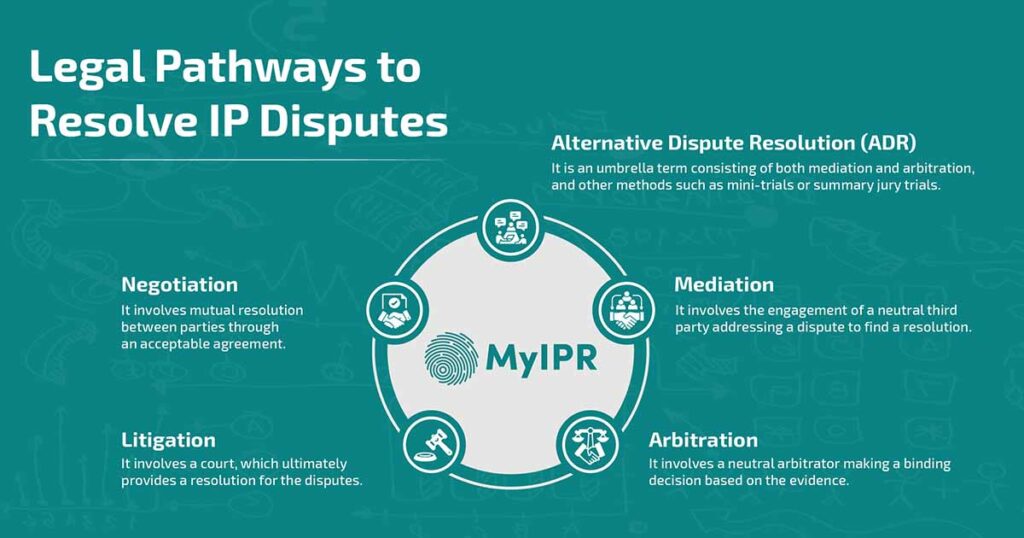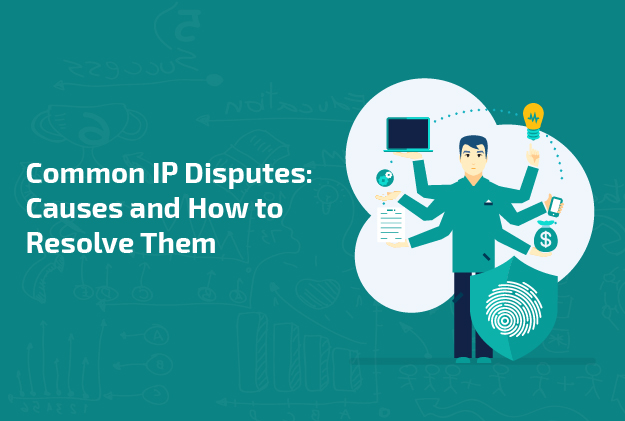
In 2016 Coca-Cola filed a lawsuit against Monster Beverages over an IP dispute. The dispute started with Coca-Cola accusing Monster Beverages of violating a distribution agreement. However, they settled their dispute in 2019 with a middle ground. This is not the only case of IP dispute and certainly not the last one as now and then, companies, businesses, and individuals often engage in IP disputes. This shows the importance of IP protection and management. In this blog post, we will understand what IP disputes is, what are prominent causes resulting in IP disputes, and how to resolve them.
Introduction to IP Disputes
Intellectual property (IP) disputes arise over disagreements, unauthorized use, licensing, or infringements over the rights of creative assets. Common IP disputes include copyright, trademark, trade secrets, and patents. This is why it is essential to protect IP rights not just for businesses but also for creators to prevent IP infringements and disputes.
Kinds and Causes of IP Disputes
There are several causes leading to intellectual property disputes including unintentional plagiarism, unawareness about IP rights, licensing disputes, partnership conflicts, and others. These conflicts can touch various domains of IP including:
Copyright infringement: It arises when someone uses, misuses, plagiarizes, or infringes upon a copyrighted work without permission of the rightful creators. This includes reproduction, distribution, public display, or creation of derivative works imitating the original content without authorization and content of the copyright holder. Frequently copyright infringement cases include pieces of literature, artwork, paintings, lyrics, music, films, and software codes.
Trademark infringement: It occurs when someone uses a mark, brand identity, or uncanny resemblance to a brand element like logos, signs, symbols, slogans, and names, without permission from the rightful owner. These resemblances can cause customer confusion, potentially harming the reputation and finances of the original brand or business.
Patent Dispute: It arises when a party challenges another party for the ownership or infringements of the patented product. This often leads to a legal battle between the parties involved. Often breached industries consist of technology, manufacturing, invention, and pharmaceuticals.
Trade secret dispute: It involves conflicts over unauthorized use, misuse, display, disclosure, or acquisition of confidential business information that is crucial for a competitive advantage. Widely infringed upon elements incorporate formulas, processes, customer lists, marketing strategies, and other proprietary information. These conflicts often arise when former business partners, employees, or competitors exploit these secrets.
Legal Pathways to Resolve IP Disputes

Remedies for IP Dispute Resolution
Resolving IP disputes is essential for the protection and management of intellectual assets including business ideas and individual creativity. They consist of conflict-resolving methods. The following are given the ways to tackle common IP disputes:
Monetary Damages: It includes compensation for financial loss due to infringements and violations of intellectual property rights.
Injunctions: These are the legal orders from the court, that bind a party from infringing activities to prevent further infringements. Any future engagement may result in penalties or contempt of court in case of any.
Statutory Damages: It is a fixed sum awarded to a copyright holder in case of infringement, regardless of actual damages. The amount can vary significantly, depending on the jurisdiction and the nature of the infringement.
Attorney’s Fees: It is the recovery of legal costs incurred by a party in pursuing or defending an IP dispute. In several cases, prevailing parties may recover these fees from the losing side, encouraging strong legal representation.
Resolving IP disputes is crucial along with the protection of intellectual assets through intellectual property rights (IPR). However, it is not easy to gain an IPR as the process itself needs some legal requirements and document verification. There comes MyIPR as your savior to protect and safeguard your business endeavors and successive innovations.
MyIPR is designed to mitigate the issues of plagiarism, theft, and misuse of creative ideas. It is a user-friendly application that provides a smooth certification process. This certificate acts as primary evidence that can facilitate the IPR and can be used in case of any feuds or allegations. Blockchain technology offers a robust solution by securely collecting and timestamping evidence of IP creation, making MyIPR a secure platform for creators and businesses to commence their creative ventures in a safe environment. Besides, MyIPR has been molded with an advanced algorithm that can detect the similarities among the different ideas; it can further shrink the chances of the coincidence of double discoveries or processing similar ideas.
Conclusion
In conclusion, understanding, addressing, and resolving intellectual property (IP) disputes is crucial for securing creative assets. These steps ensure fair and healthy competition in the marketplace. The diverse causes of these disputes, specifically copyright and trademark infringements, highlight the necessity for effective IP management. There are multiple remedies like monetary damages, injunctions, statutory damages, and recovery of attorney’s fees, that play a crucial role in resolving conflicts.
Moreover, there are legal pathways to settle IP disputes like litigation, Alternative Dispute Resolution (ADR), and arbitration. As businesses and individuals increasingly engage in IP-related activities, platforms like MyIPR emerge as essential tools for protecting and managing intellectual property. By leveraging innovative technology, MyIPR aims to foster a secure environment for creativity, business, and innovation.
FAQs
What is an intellectual property dispute?
IP disputes refer to conflicts arising from violations, unauthorized use, or infringements of rights and ownership of intellectual property (IP).
How do I resolve an IP dispute?
IP dispute is resolved through negotiation or mediation to reach a mutually acceptable agreement. Legal pathways include arbitration or litigation to enforce your rights and clarify ownership.
What are the common causes of IP disputes?
The common causes of IP disputes include infringement, ownership conflicts, contract breaches, and licensing issues.
What is the role of mediation in IP disputes?
Mediation plays a crucial role in resolving IP disputes as it serves as a neutral process to help parties reach a mutually agreeable solution.
How can businesses prevent IP disputes?
Businesses can prevent IP disputes by implementing clear agreements and conducting regular IP audits.













